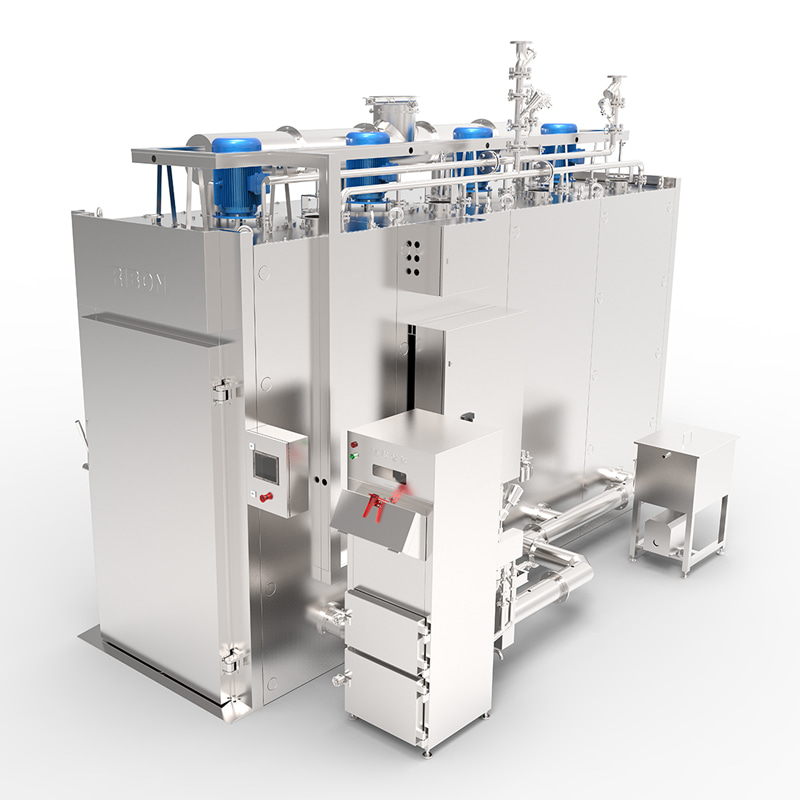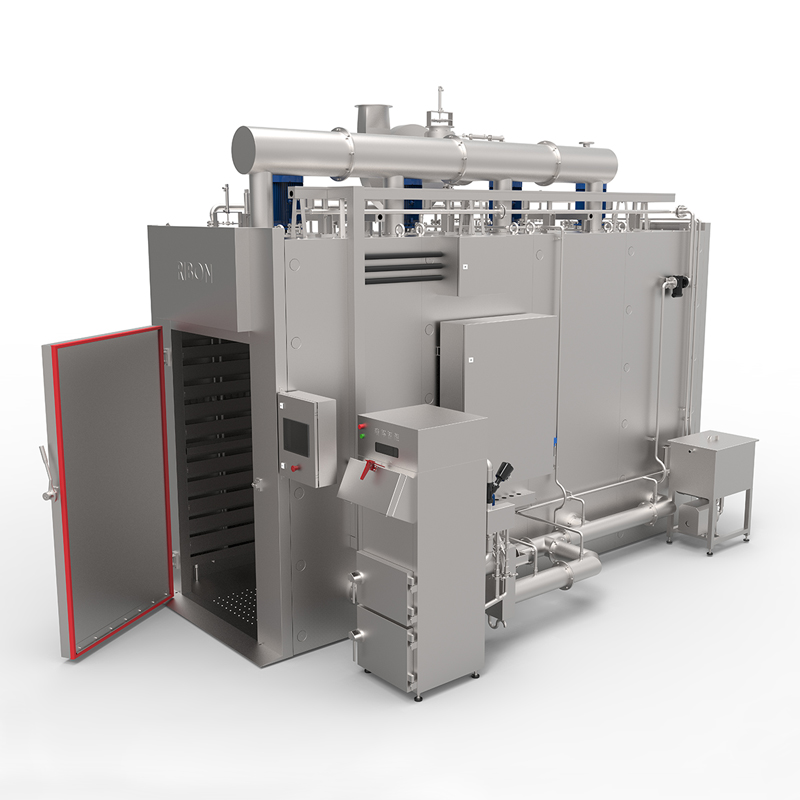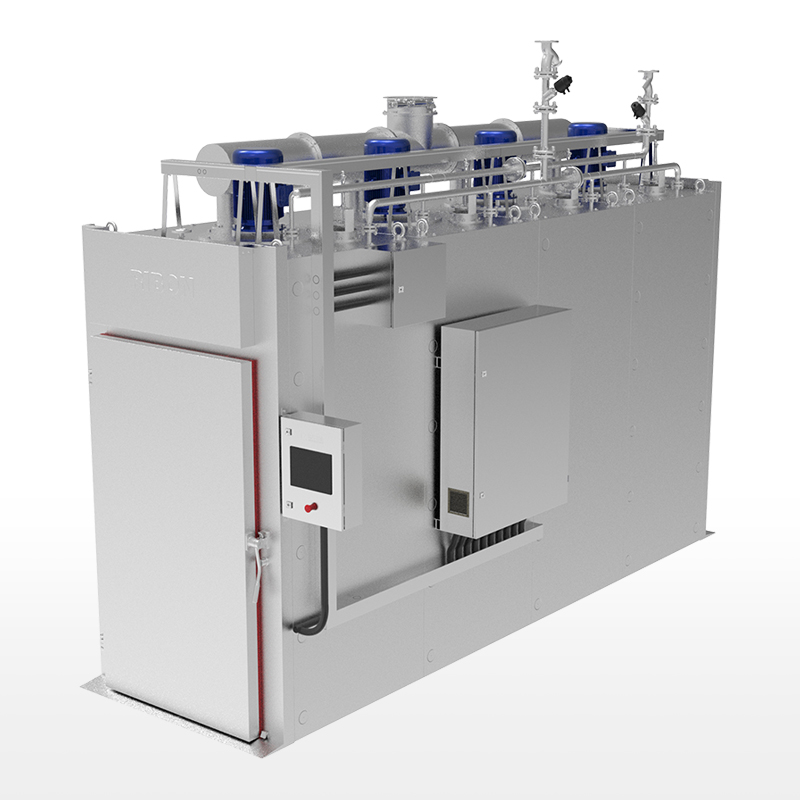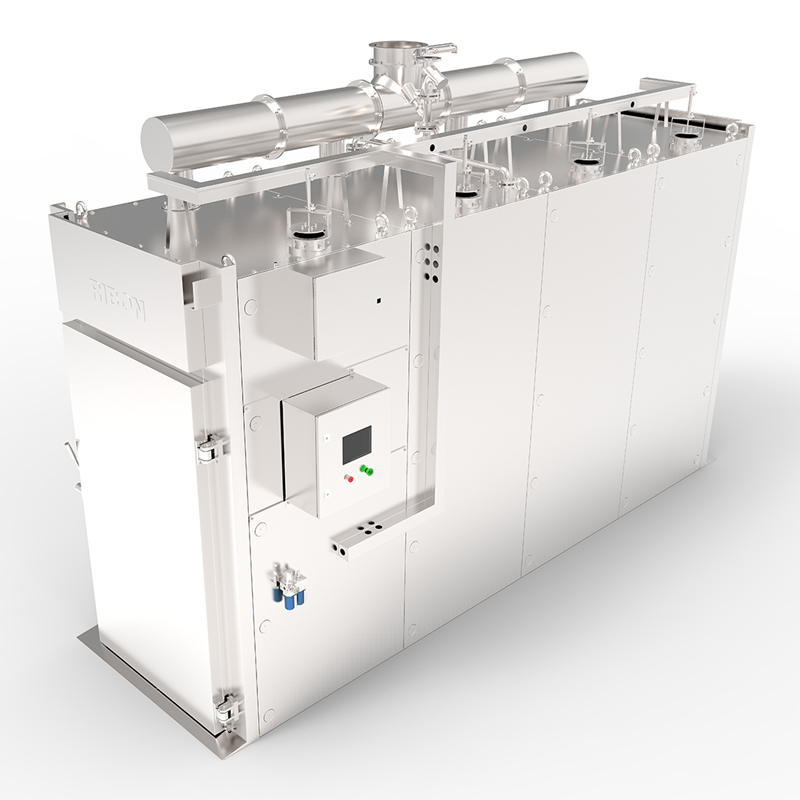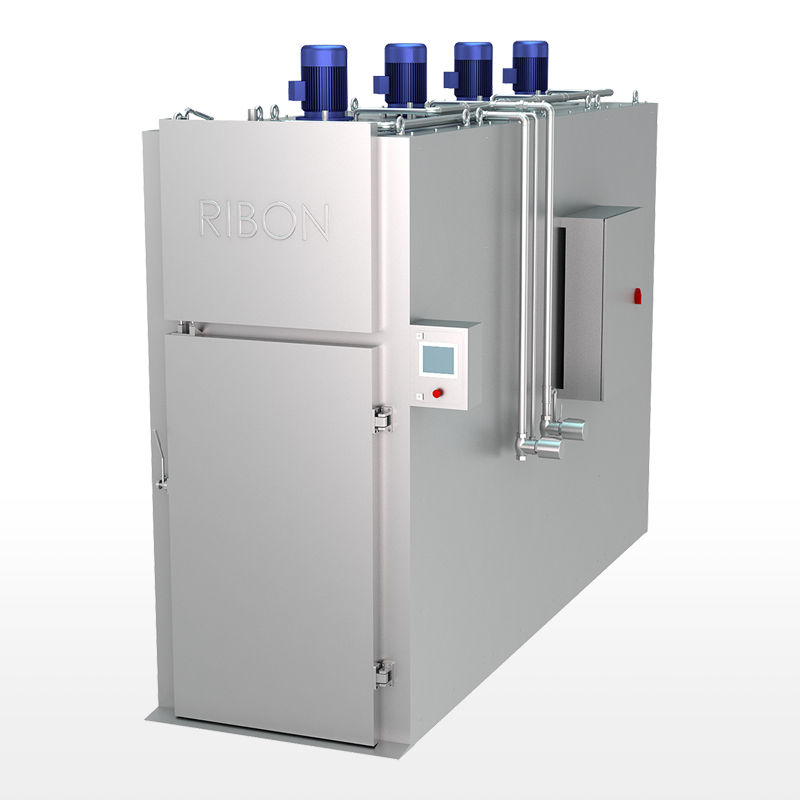Vacuum tumblers have become indispensable in the modern food processing industry, especially within meat, poultry, seafood, and even plant-based sectors. Designed to improve marination, texture, and flavor absorption, these machines dramatically shorten processing time while enhancing product consistency and yield. This article provides a comprehensive overview of what vacuum tumblers are, how they work, and why they’re a cornerstone of high-efficiency, high-quality food production.
1. What Is a Vacuum Tumbler?
A vacuum tumbler is a cylindrical, stainless steel chamber equipped with a vacuum pump and a rotating drum. It is used to marinate and tenderize food products, primarily proteins like meat and seafood. Under vacuum pressure, the muscle fibers of food expand, creating microscopic channels that allow brine or marinade to penetrate deeply and evenly. The mechanical tumbling motion further massages the product, enhancing flavor absorption and protein structure.
Unlike traditional soaking methods that rely on passive marination over long periods, vacuum tumbling offers a rapid, controlled, and uniform process that maximizes efficiency and product quality.
2. How Does a Vacuum Tumbler Work?
The operation of a vacuum tumbler follows these stages:
a. Loading and Sealing
The raw product, such as chicken breasts or beef chunks, is loaded into the drum with a predetermined volume of marinade or seasoning mix. The drum is then sealed.
b. Vacuuming
A high-performance vacuum pump removes the air from the chamber, creating a low-pressure environment (usually between -0.06 MPa and -0.09 MPa). This vacuum opens up the structure of the meat tissue.
c. Tumbling
Once vacuum conditions are achieved, the drum begins rotating slowly (5–15 RPM). This mechanical action causes the food to lift and fall repeatedly, gently massaging it and helping the marinade to distribute uniformly.
d. Resting and Pulsing
Many advanced tumblers utilize a pulsed vacuum technique, alternating between tumbling and rest periods. This allows the marinade to settle into the tissue more effectively and prevents excessive damage to delicate protein structures.
e. Draining and Unloading
After the set cycle, the vacuum is released, and the product is discharged—often ready for cooking, packaging, or further processing.
3. Advantages of Vacuum Tumbling
Deep Marination in Less Time
Vacuum conditions enhance capillary action, causing the marinade to be absorbed much faster and more thoroughly than with traditional soaking.
Improved Tenderness and Juiciness
The physical tumbling action softens muscle tissue and promotes protein swelling, improving moisture retention and tenderness.
Enhanced Product Yield
Food products retain more water and seasoning, increasing their final weight—benefiting both flavor and profitability.
Even Flavor Distribution
Ingredients like salt, spices, sugars, and phosphates are spread evenly throughout the entire batch, ensuring uniform taste and quality.
Shorter Processing Times
What used to take 12–24 hours in traditional marination methods can now be completed in 20–60 minutes.
Better Appearance and Structure
Tumblers give processed meat a tighter, more uniform structure, enhancing its slicing quality and visual appeal.
Extended Shelf Life
Vacuum tumbling can improve microbial stability by reducing air pockets where bacteria may grow and enhancing ingredient integration.
4. Applications Across Food Sectors
While meat processing is the primary application, vacuum tumblers are used in a variety of food production areas:
-
Beef & Pork: For products like steaks, chops, ham, sausages, and bacon.
-
Poultry: Whole birds, wings, breasts, and marinated skewers.
-
Seafood: Shrimp, squid, scallops, and fish fillets for flavor enhancement and moisture retention.
-
Plant-Based Proteins: Tofu, seitan, and textured vegetable protein for marination and consistency.
-
Prepared Meals: Vacuum tumbling ensures uniform seasoning in ready-to-cook dishes like kebabs, fajitas, or meat mixes.
5. Technological Variations
Modern vacuum tumblers come in a range of designs suited to various operational scales:
Basic Manual Tumblers
Ideal for small businesses or butchers, with simple controls and manual vacuum adjustment.
Programmable Tumblers
Equipped with PLC control panels that allow setting time, speed, rotation direction, and vacuum intensity.
Cooling Tumblers
Feature internal or external refrigeration systems that maintain ideal marination temperatures, especially important for seafood or extended cycles.
Double-Drum or Twin-Axle Tumblers
For high-volume industrial operations, these allow parallel processing, maximizing output.
CIP (Clean-In-Place) Systems
Automated cleaning functions ensure sanitary conditions and reduce downtime.
6. Key Considerations When Buying
When selecting a vacuum tumbler for your operation, consider the following:
-
Capacity: Ranges from small (25–50 kg) to industrial (1,000+ kg) batches.
-
Drum Design: Polygonal designs offer more effective tumbling compared to smooth drums.
-
Material Quality: Always choose food-grade SUS304 or SUS316 stainless steel.
-
Vacuum System: High-efficiency vacuum pumps are essential for speed and performance.
-
Control Options: Touch-screen interfaces with programmable recipes save time and reduce human error.
-
Power Consumption: Check energy efficiency ratings, especially for continuous-use machines.
-
Footprint: Match machine size to available factory or kitchen space.
7. Maintenance and Safety Tips
-
Daily Cleaning: Prevent bacterial build-up by washing the drum, valve seals, and pump lines after each batch.
-
Lubrication: Maintain bearings and gearboxes according to manufacturer schedules.
-
Pump Maintenance: Monitor oil levels and filters in the vacuum pump regularly.
-
Inspection: Check gaskets, pressure sensors, and door locks to ensure operational safety.
-
Training: Operators should be trained on both food safety and machine operation procedures.
Conclusion
Vacuum tumblers represent a critical innovation in food processing, offering enhanced product quality, consistency, and operational efficiency. From artisanal butchers to global food manufacturers, these machines help businesses meet the growing demand for flavorful, tender, and ready-to-cook products in a competitive market. Choosing the right vacuum tumbler—and maintaining it well—can significantly elevate your processing capabilities and product appeal.





 English
English русский
русский Español
Español عربى
عربى
